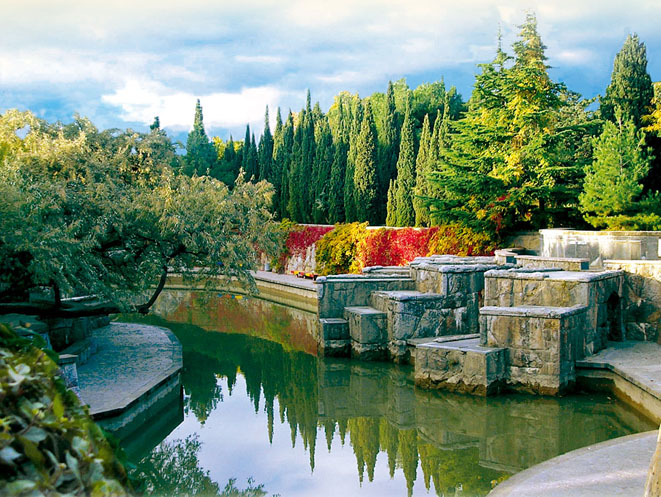- There is a group of specially protected species (about 175 specimens) belonging to the rare, Red Book and especially valuable.
- From the category of rare for Crimea parks: london plane, Macnab Cypress, Vilmorin's fir, Spanish fir, Lebanon cedar, white mulberry, Monterey cypress, white fir, Greek fir, virgin juniper, common quince, oriental apple tree, cedar atlas, balsam poplar, Lawson cypress, catalonia bigon-shaped, Cyprian cedar, drooping willow, stone pine, Yew column.
- Rare for the Sudak region - Judas Tree, Pink Siris, Algerian Fir, Dwarf Rosemary, Greek Fir, Nordman Fir, Small-Leaved Linden, Trachycarpus Fortunei, Lombardy Poplar (Black), Grecian Laurel, Chinese Fan Palm, Agave Variegated, Wisteria Chinese, Bay Cherry and other
- Of the rare in the park: Mexican Cypress, Elm Cork, Whitebark, Corsican Pine, Savine Juniper, Crimean Hawthorn, Lavender, etc.
- The basis of the Park is the community of Pitsunda Pine - a stable native species listed in the Red Book, and endemic Stankevich pine (Sudak pine).
Definite decoration of the park is a landscape ensembles and ornamental pools with fountains, cascades, a bridge, grottoes, a romantic island.
A unique symbol of the park can be considered a bronze sculptural composition "Abduction of Europe", presented to the health resort in 1970 by the Leningrad sculptor B.A.Svinin.
The park has memorable alleys: Moscow (planted by members of public organizations of Moscow) and the International Conference "Crimea".
In the quiet corners of the park it is nice to hide from the scorching sun, and in the evening, making a promenade, you can walk along the cypress, pine, cedar, chestnut alleys. And above all this beauty stands the Genoese fortress, fantastically blending into the local landscape and giving it a unique charm.


